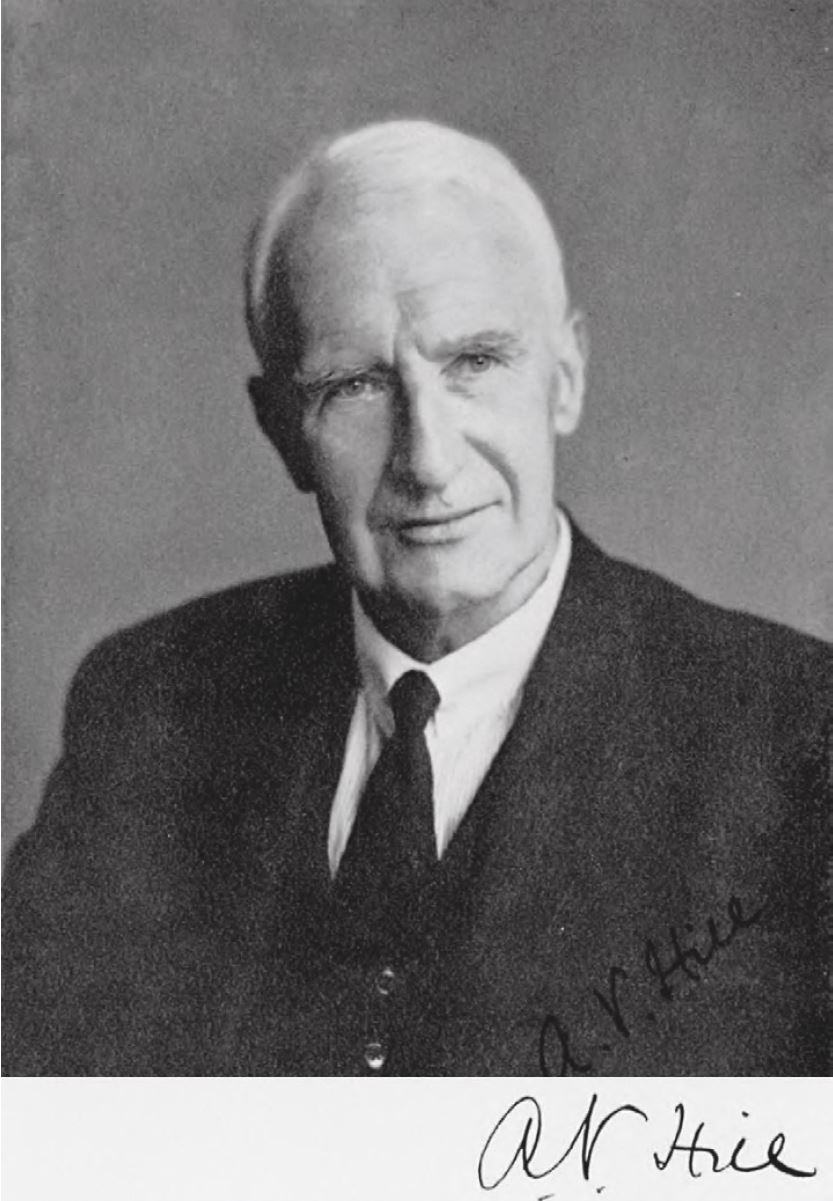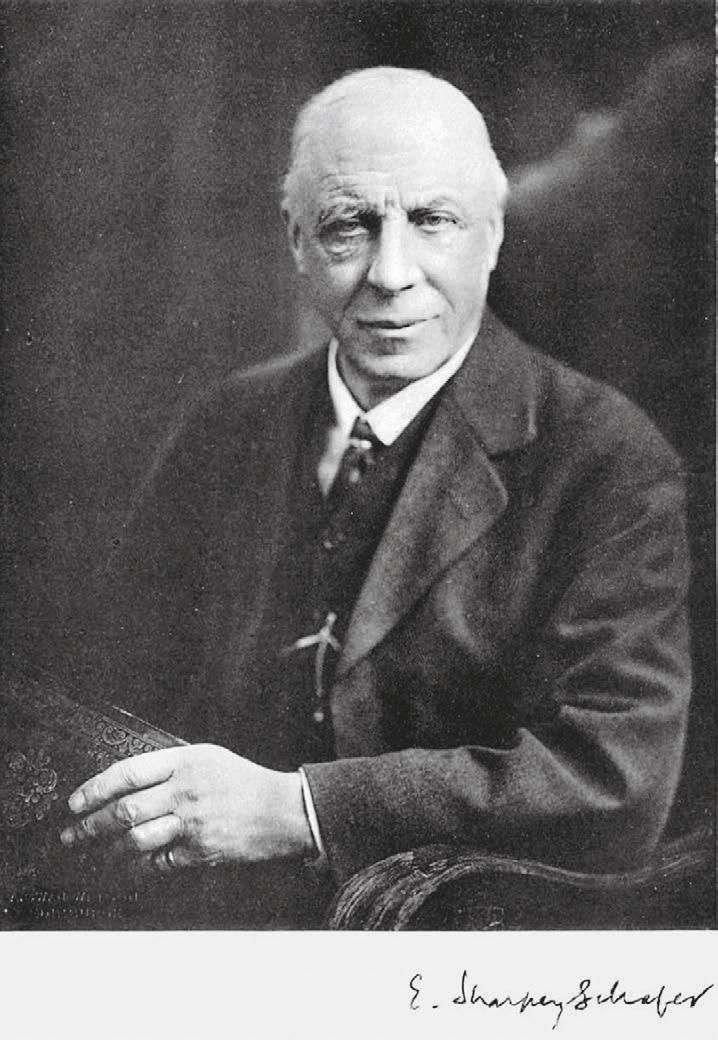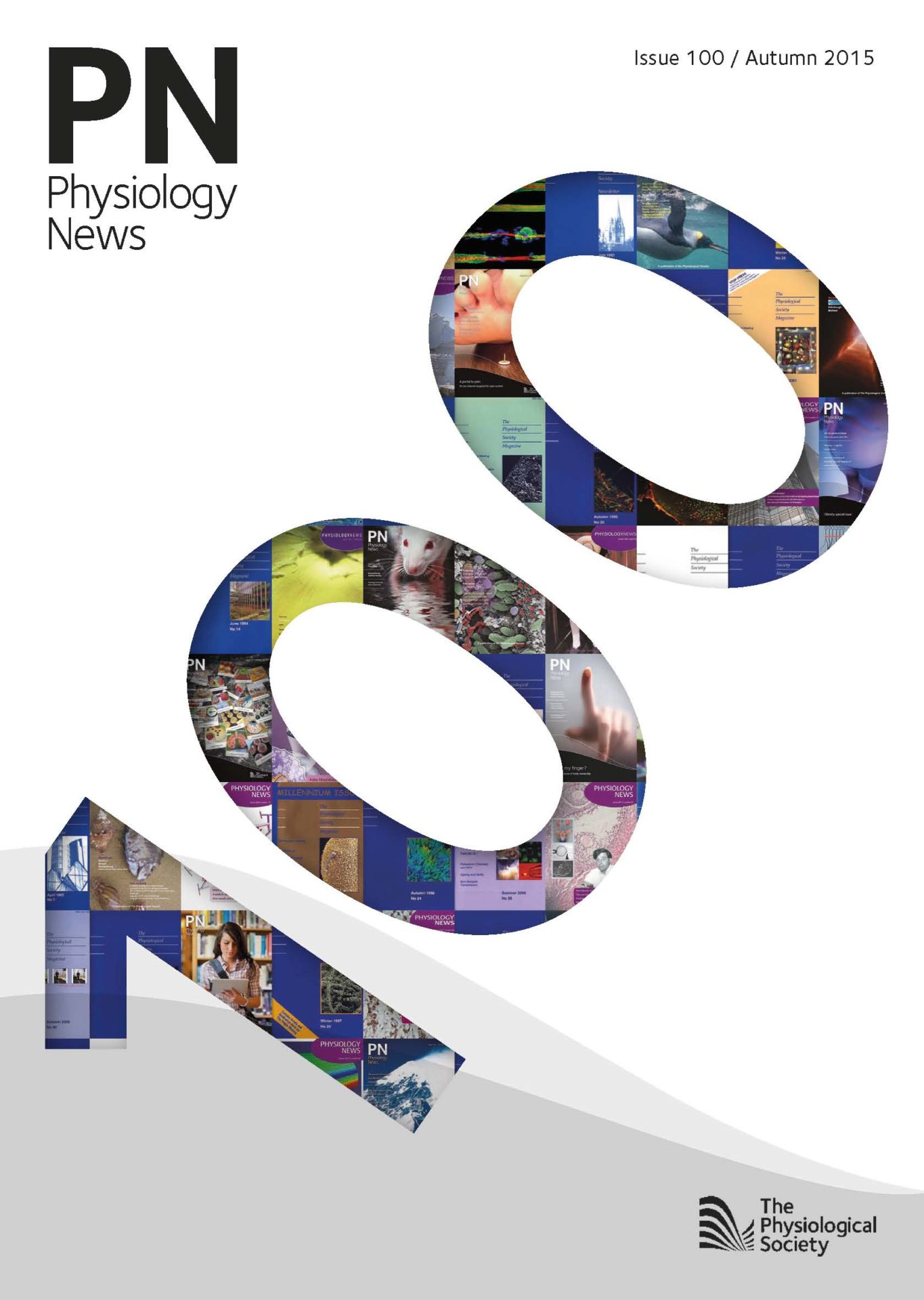
Physiology News Magazine
Collaboration in experimental science: AV Hill and the rise and fall of alphabetical author order in The Journal of Physiology
Do arguments from the 1930s resonate today?
Features
Collaboration in experimental science: AV Hill and the rise and fall of alphabetical author order in The Journal of Physiology
Do arguments from the 1930s resonate today?
Features
Richard Boyd
Brasenose College, University of Oxford, UK
https://doi.org/10.36866/pn.100.20
Harvard Medical School is one of many institutions that have a section on ‘authorship guidelines’ as a part of its public statement on Integrity in Academic Medicine. There is a section on ‘the order of authorship’ which states: ‘many different ways of determining order of authorship exist across disciplines, research groups, and countries…order of authorship has no generally agreed upon meaning’.

Despite this clear statement, many involved in modern biomedical research (whether as readers of scientific literature, as authors of published work or as appointment or grant panel members) assume that they ‘understand’the ‘significance’ of the position of an author’s name in a co-authored publication. But as the Harvard document makes clear: ‘it is not possible to interpret from the order of authorship the respective contributions of individual authors…(so) readers should not read into order of authorship their own meaning which may not be shared by the authors themselves’. Hence much confusion, bitterness and dispute continues, not least between scientific colleagues as co-authors (see e.g. Claxton, 2005; Wren et al., 2007; Anon (editorial) 1997).
Nevertheless, joint publication thrives and now dominates much, and in some fields virtually all, of experimental science. There are many reasons for this. The most cogent, intellectually, is a point made with typical panache by PB Medawar (‘the foremost biologist of his generation’: Mitchison 1990). Medawar writes: ‘The rationale of collaborative research is the synergism of two or more minds working towards the solution of the same problem, two or more people working together can accomplish more than the sum of what would have been possible if those same people had been working on their own: it is only in science…that this relationship obtains: it is not easy to imagine a novel being any better for having been written by two pairs of hands…More than that, colleagues enhance the satisfaction of having a bright idea or bringing a tricky experiment to a successful conclusion and they make the setbacks and the longeurs that are inevitable in scientific research much more supportable. Loners don’t know what they are missing.’ (Medawar 1986).
The centenary of Peter Medawar’s birth falls this year. Interestingly, although celebrated for his Nobel-Prize-winning studies on Immune Tolerance, Medawar (who died in 1987) saw himself as a zoologist but one who was very much the product of a ‘physiological’ training. As an Oxford undergraduate, he had JZ Young (of squid giant axon fame) as his tutor. He subsequently worked in the Oxford Department of the newly appointed Professor of Pathology, Howard Florey (another physiologist-manqué). And it was from this Department that he published, in Experimental Physiology (then the Quarterly Journal of …), his first scientific paper (Medawar 1937). Mitchison (1990) notes that, from then on when co-publishing, ‘Medawar followed the uninformative but generous practice of listing authors alphabetically’ as in his seminal paper with Billingham and Brent (Billingham, Brent & Medawar, 1953).


Understanding the origins of the alphabetical author order rule in The Journal of Physiology emerges from two sources. One source is the two letters written by AV Hill to Edward Sharpey-Schafer in January 1935 which were published only recently (Boyd 2012); the other source is from the (previously unpublished) Minutes of the Editorial Board of J Physiol. The first mention of the topic in these Minutes appears to have been at the Editors’ meeting in Oxford on 14 July 1928. The four editors present were Sherrington, Leathes, Adrian and Hill. Item 9 reads: ‘Alphabetical order in authors’ names: Dr Adrian and Prof Hill reported that in respect of a recent paper they had asked the authors to put their names in alphabetical order, and they proposed to the Board that no exception should be allowed to the principle of the alphabetical order in the case of joint authorship. No decision was reached. It was decided to ask the Committee of The Society for guidance in the matter.’
Hence the minutes of the next Editorial Board meeting (at University College, London on 13 October 1928) have, as ‘matter arising, item f’: ‘Alphabetical order in authors’ names: The Committee of the Society at their meeting in the afternoon was asked to express an opinion…The opinion of a large majority of the Committee was that alphabetical order should be adopted. In view of this a notice will be printed on the cover of The Journal requesting authors to place their names in alphabetical order’.
For the previous fifty or so years, The Journal had allowed authors to choose the order in which their names appeared. These Editorial Board minutes provide the factual history of the process by which that altered. The changes remained in place for roughly the next 60 years, until the 1990s, by which time they had become contentious within The Society. The topic became divisive. Supporters of the alphabetical order rule were treated with some derision by many of the (then) bright young Turks (e.g. Roger Thomas, David Atwell) who saw themselves on the side of history in confronting the old fogies running J Physiol.
But what was the intellectual basis of the 1928 proposal? What emerges from the letters Hill sent to Sharpey-Schafer in January 1935 is that this was thoughtful, rigorous and principled. Selected parts of this correspondence are reproduced (from Boyd, 2012) below. [The relevant correspondence survives because Hill’s successor to the Chair of Biophysics at UCL, Bernard Katz (who on this topic as many others was unambiguous in support of the ‘Hill’ approach: and who, as his masterly obituary of AV Hill indicates, was a scientific disciple of and follower of Hill’s intellect and quantitative thinking) kept the copies which he found in Hill’s files at UCL. It seems likely that the extent of Katz’s support for the approach that Hill had adopted was such that the reversal of policy that ultimately did occur was possible only after Katz had left the Editorial Board.]
By 1935, Hill had become Chairman of the Editorial Board. Three key points arise in his response (7 January 1935) to criticism from Sharpey-Schafer who was seeking for the ‘alphabetical order’ rule to be reconsidered. The first is that: ‘The Editors had had no reason to regret the new policy [which overcame] a chief objection to the ‘other’ [that is non-alphabetical author order method] where if n different authors do a piece of work together, then in order to demonstrate to the world that they are (in the words of the Athanasian creed) ‘co-equal and co-eternal’ they have to write not one paper on the subject but factorial n papers. If n=2 that is not so bad – it means only two papers; but if n=3 it means six and if n=4 it means 24, and if n=5 120 papers. That is the reason why American journals are so cluttered up with innumerable papers on the same subject by various authors with their names arranged in every possible permutation’.
The second point, an important one, follows on from this: ‘If the tendency to reduce the number of papers by n authors below the theoretical number of factorial n, the result is extraordinary jealousy between different authors, because if one fellow finds that his name does not come first at all….then he gets very jealous and a fight of some kind ensues. All this nonsense about priority and seniority is very undignified and unfitting a decent scientific society’.
And then to the final point: ‘You say that our plan of putting the names in alphabetical order is misleading: that is exactly what it is not. Everybody knows perfectly well that our authors are in alphabetical order – we say so on the cover – and therefore nothing can be deduced from the order (except that the Editors know the order of the letters in the alphabet)’.
In a further follow-up letter to Sharpey-Schafer (10 January 1935), Hill re-emphases this point: ‘You talk about our rule ‘misleading’ the public – that, as I said in my last letter, is precisely what it does not do. You can draw no conclusion whatsoever from the order of the names – it may not lead, but it does not mislead. The difficulty about leading is that leading is so often misleading’.
Hill adds a personal context to the argument: ‘I have adopted the method myself in all my papers for many years, and I have not noted that any harm has happened by it or that I have been charged with misleading the public. When Hartree and I have written papers the order of the names has been Hartree and Hill. It was quite unnecessary for me to rub in the fact that I had had perhaps a larger share in originating the work than Hartree had had.’
And the comment that, in my mind, is still of interest: ‘I know how much jealousy and trouble is caused in America by this question of the order of authors’ name, and that we have eliminated at one blow by our actions…these personal questions ought to be eliminated from science; questions of priority and seniority are undignified and unworthy; even as matters are, with the alphabetical order all complete, the senior author is very apt to get much more than his fair share of credit anyhow and the junior less than his. There is no need to aggravate it by insisting on one’s ‘rights’.
So why, by the 1980s, was the pendulum swinging strongly against this way of thinking? The dominance of North American science increasingly became the reality, in physiology as elsewhere; this could not be ignored. The empirical basis for a ‘more pragmatic’ perspective was exemplified in a particularly stark manner when the ‘cost’ to J Physiol of retaining alphabetical author order led, in 1963, to Hubel and Wiesel submitting their next series of papers, after their initial three joint papers in J Physiol, to the younger (and American) Journal of Neurophysiology (Wiesel & Hubel 1963) allegedly ‘because Wiesel initially couldn’t get tenure at Harvard because he hadn’t a sufficient number of first author papers’ (oral communication, Dr George Gordon). (What does this say about the then tenure committee at that institution and its apparent inability to comprehend revolutionary scientific discovery, a problem not shared subsequently by a certain committee in Stockholm!)
So what, as seen some thirty years after the abolition of ‘alphabetical author order’, can we tease out as the real issues? The sequencing of authors’ names in joint publication remains unsatisfactory largely because of the scientific community’s unwillingness to accept the point well-made (ironically by Harvard Medical School) and emphasised in my opening paragraph. Do we understand the meaning of an asterisk placed after one author’s name telling us, in a footnote, that this individual is to be considered as ‘joint second author’? This, now common, style hints at the arrival of an ‘epigenetics’ of authorship: information is coded in ways that remain murky and non-explicit, but somehow this code has contributed to the evolution of a sociology of scientific interaction. At times one senses that there may have been more wrangling between authors about what the asterisk signifies than discussion regarding the scientific content and clarity of presentation of their paper. We can be sure that, on this, the man who wrote with such great prescience that ‘the difficulty about leading is that leading is so often misleading’ would have been appalled.
Statement on Conflict of Interest: It should be noted that the author’s surname begins with the second of twenty six letters
Acknowledgement
I am most grateful to Jonathan Goodchild for having provided access to the Editorial Board minutes of The Journal of Physiology.
References
Anon (editorial) (1997). Games people play with authors’ names. Nature 387, 831
Billingham RE, Brent L & Medawar PB (1953).Actively acquired tolerance of foreign cells.
Nature 172, 603-606
Boyd CAR (2012). Oxford Magazine 325, 10-12
Claxton LD (2005). Scientific Authorship Part 2. Mutation Research 589, 31-45
Harvard University Medical School: Integrity in Academic Medicine (1999)
Katz B (1978). ‘AV Hill’. Biographical Memoirs of Fellows of the Royal Society 24, 71-149
Medawar PB (1937). A factor inhibiting the growth of mesenchyme. Q J Exp Physiol 27, 147-162
Medawar PB (1986), ‘Memoir of a thinking radish: an autobiography’ Oxford University Press
Mitchison NA (1990). ‘PB Medawar’. Biographical Memoirs of Fellows of the Royal Society 35, 282-301
Wiesel TN & Hubel DH (1963). Effects of visual deprivation on morphology and physiology of cells in the cat’s lateral geniculate body. J Neurophysiology 26, 978-993
Wren JD et al. (2007). The Write position. EMBO Rep 8, 988-991
